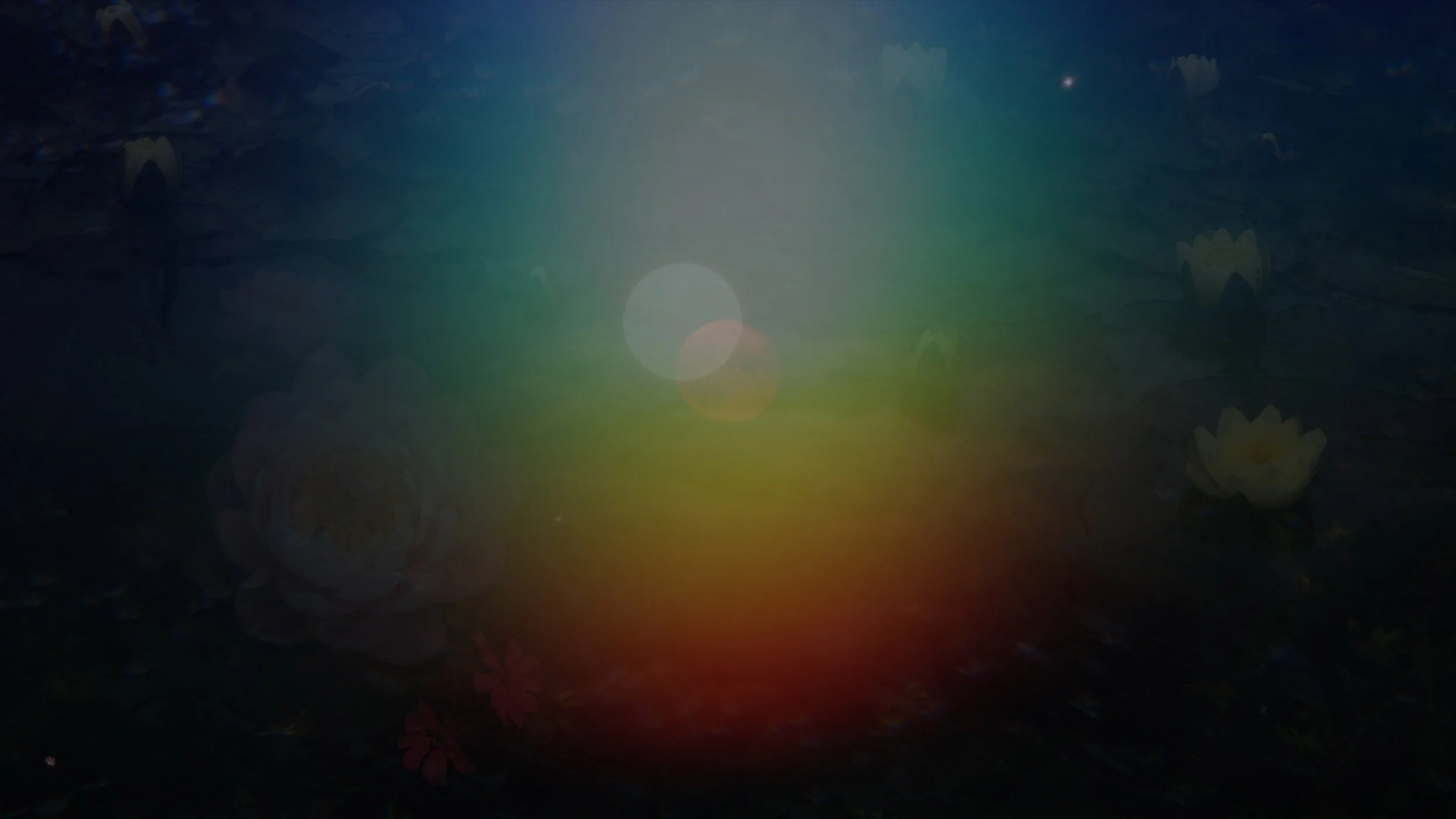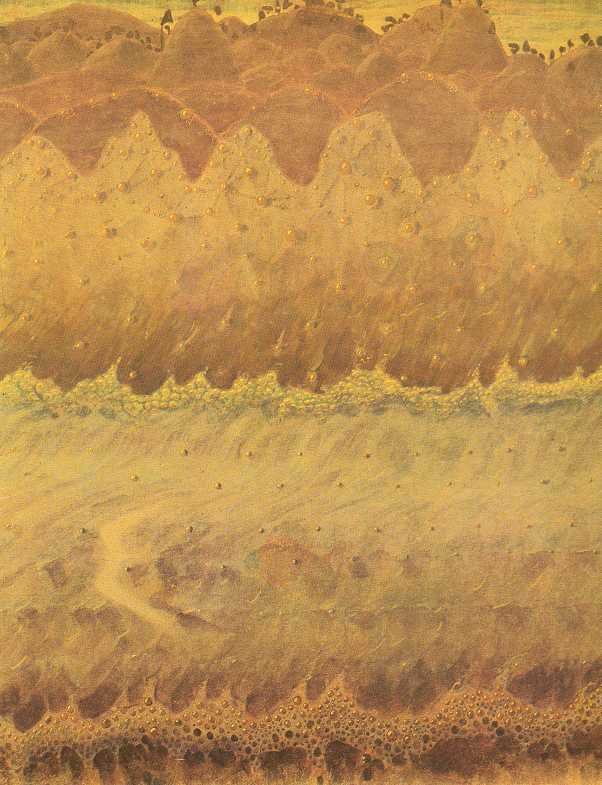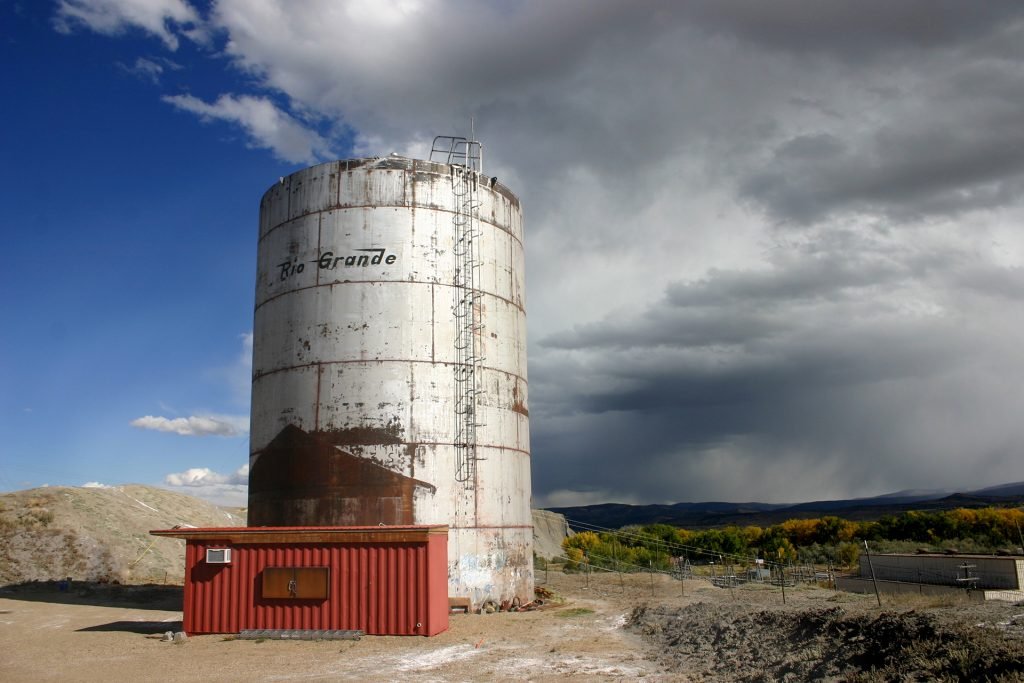“As the days in the editing suite floated by I began to feel like I was inhabiting the film’s emergent landscapes, places where a vast translucent flower might sway beneath a stream of rainbows, or where a moon-pearl might be seen rising from the silken interior of an underwater rose - perfumed scenes awash with undulating prismatic light or brightened by the illumination sent from strange stars.” Journal note, 2024
The Realms Beyond the Screen, film still, 2024
Back in early 2024, I began working on what would become my film The Realms Beyond the Screen. Before beginning the film I’d read, and been fascinated by, Dr. Rick Strassman’s 2001 book The Spirit Molecule, detailing his experiences of conducting a series of drug trials with the ferociously potent psychedelic DMT. In the book’s epilogue, Strassman quotes one of the trial’s participants who, as the hallucinogenic drug’s torrential effects began to dissipate, stated:
“I heard absolutely nothing, but my mind was completely full of some sort of sound, like the after effects of a large ringing bell.”
I’d noted this quote down in my diary at the time and something of this infuses the film’s score, I think. Composer Abi Fry’s soundtrack - resonant with bell-like reverberations and layered sonic overtones - expanded the film’s cinematic landscapes, whilst suggesting, to me, deep regions of mental interiority. The reports included in Strassman’s book - tales of alien otherworlds, shimmering colour-fields and intelligent entities waiting beyond the threshold of everyday consciousness - were absolutely captivating, with the trial’s participants seeming to me as intrepid as polar explorers, or as reckless as voyagers to the abyssal depths of oceanic trenches. Whilst I didn’t attempt to create representations of any of the book’s bizarre reports, they may well have informed the film’s style, fusing in my imagination with a stream of seemingly related influences, which included reports of near death experiences and studies of fairy-faith folk beliefs. These influences intermingled with recollections of a particular moment in an Advanced Dungeons & Dragons campaign I’d played as a young teenager, where the adventuring party of player characters I was part of transitioned from one imaginary realm to another, journeying to an alternative plane via a shimmering magic pool, where we emerged astonished into an uncharted world lit by twin suns. The experience of imaginatively voyaging to this world-within-a-world is, I can now see, directly referenced in the opening sequence of the film, where two celestial bodies hang suspended in a subaqueous cloud landscape - a vision floating in a pool of prismatic colours - forming a gateway between worlds.
The Realms Beyond the Screen, film still, 2024
Every space depicted in The Realms Beyond the Screen appears as if underwater. For me, the paradoxical appeal of landscapes sunken beneath water is probably to do with the idea of dissolution, of becoming overwhelmed by nature - and of being eroded as a single entity, merging instead into some undifferentiated mass, perhaps to arise again transformed. The multiplicity of layered imagery in the film seems, I think, to undermine the authority of the solitary, stable image. The film’s intermingling images suggest that a single, solid reality is untenable amid an interlinked multiplicity of translucent realms. This lack of any stable ground is augmented by the proliferation of bizarre, non-naturalistic images, formed at the intersection of numerous scales and perspectives. Also, the film’s paradoxical procession of superimpositions unfolds at a dilated tempo, setting the world onscreen apart from the rhythms of our waking world - a further gesture of disassociation from baseline reality. To me, the film’s title The Realms Beyond the Screen is to do with trying to use film to suggest a space beyond the world of everyday experience, depicting a phantom zone situated, perhaps, in the depths of personal subjectivity, or in some adjacent dimension, or somewhere arising from a fertile intermingling of the two.
The Realms Beyond the Screen can be watched here.
Please kindly note that, if you do decide to press play, I’d recommend doing so in the dark.
The Realms Beyond the Screen, film still, 2024
J'habite à Paris
Paris, with its symbolist paintings and labyrinthine catacombs, has long been a city of fascination. With that in mind, I am very pleased that my films Mental Space and Night on the Riverbank have now taken up permanent residence there, having been recently added to the Collectif Jeune Cinéma collection. Founded in 1971, the collection distribute a growing archive of experimental films, representing experimental cinema in all its myriad forms. Each year, the CJC also organises the Festival des Cinémas Différents et Expérimentaux de Paris, alongside hosting a proliferation of regular screenings at venues in Paris and Île-de-France.
Made in 2014, Mental Space seemed to spring from the pages of the Romantic poetry anthologies I’d been reading at the time. I’d become particularly intoxicated by Samuel Taylor Coleridge’s opus Kubla Khan (completed in 1797 and published in 1816), a poem written, supposedly, in the aftermath of an interrupted opium vision. With its fragmentary images of sacred rivers, incense-bearing trees and caverns measureless to man, the poem documented a series of mental images - visions salvaged from the ruins of the trance that produced them. Following Coleridge’s lead, my film charts its own internal landscape. Here narcotic nectar pours from a mammoth flower, light flickers over a fiery chasm fringed with foliage - perhaps a threshold to a deeper underworld - while an omnipotent tiger succumbs to the spell of the dream… At one screening of Mental Space, where I was invited to give a presentation to accompany the film, I chose to read another Romantic’s poem, Lord Byron’s Lines Inscribed Upon a Cup Formed From a Skull (1808). The poem offered a different, but complementary perspective on the mysterious contents of our cranial recesses. Lines Inscribed Upon a Cup Formed From a Skull was written as attempt to justify Byron’s decision to transform a human skull, unearthed by a gardener in the grounds of Byron’s Newstead Abbey, into a macabre drinking vessel. The poem aimed to reassure the appalled reader, suggesting that, for a vacated skull, it might be:
“Better to hold the sparkling grape, Than nurse the earth-worm's slimy brood”.
The shocked, morally repelled reader, is amusingly addressed directly by this re-appropriated skull:
“Start not—nor deem my spirit fled:
In me behold the only skull
From which, unlike a living head,
Whatever flows is never dull.”
These Romanic poems, both marvels, can be read in full here and here. To do so is to enliven the imagination, for they are, as Coleridge wrote in Kubla Khan, “miracles of rare device”.
Mental Space, film still, 2014
Collectif Jeune Cinéma also programmes films specifically for younger audiences. I imagine it might be with these young cinéastes in mind that they added my 2019 film Night on the Riverbank to their collection. The film, which borrows footage from a forgotten B&W children’s programme, focuses on the little creatures living alongside a riverbank, who are seen going about their nocturnal activities under the benevolent gaze of an immense watery moon. In this resurrected night-land lunar images blur together, or magically multiply. This moonlit microcosm unfolds to the melodies of a marvellous original score by composer Abi Fry which, in the words of spellbound reviewer Borja Calvo “manages to reach the territory of fantasy and dream.” In a rare Q&A, at the 2020 Alchemy Film & Moving Image Festival, Abi discussed how she went about conjuring this enchanting music :
“I have quite a specific process when composing for the films of Toby Tatum. My aim is to clear my mind and become a blank canvas whilst I watch the film many times in silence and allow ideas to surface. I try not to impose my own will until I have connected on a subconscious level and allowed the film’s magic to guide me. The first thing that came to me, when considering Night on the Riverbank, was the idea of stretching time and space and I began to experiment with cascading piano motifs to get this across, adding shimmering strings and floating harps to create the feeling of magic in the air.”
Aside from their future Collectif Jeune Cinéma screenings, Mental Space and Night on the Riverbank are also being streamed on my website and can be watched both here and here. If you do decide to press play though, I’d suggest encountering these films in the dark. Bon voyage.































































